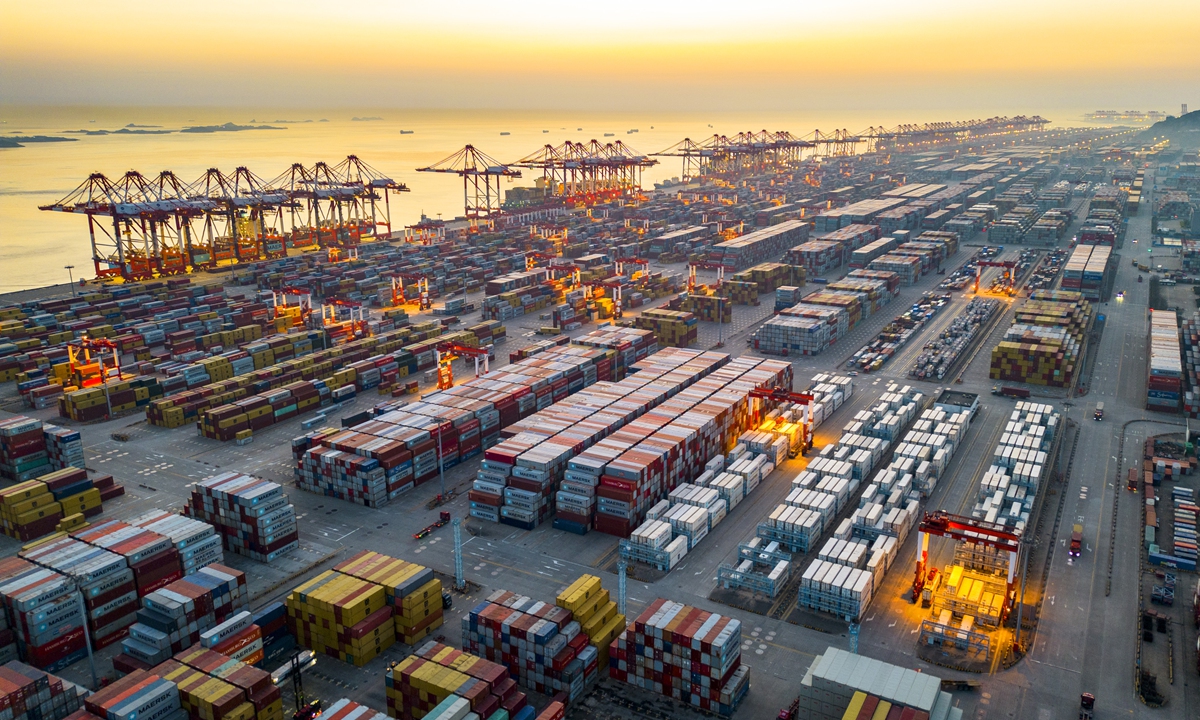China’s Q1 GDP expands 4.5%, a ‘good start’ to achieving a full-year strong recovery

Photo: CFP
China's GDP expanded 4.5 percent year-on-year to 28.50 trillion yuan ($ 4.15 trillion) in the first three months this year, the fastest growth since the second quarter of last year, signalling a good start to achieving a strong full-year recovery.
Since the world's second-largest economy declared a major and decisive victory in its response to the COVID-19 epidemic, the country's economic recovery has pressed the acceleration button, continuing to serve as the world's economic stabilizer and engine for the world's economic recovery amid headwinds ranging from US reckless interest rate hikes to global financial turbulence, analysts noted.
Tian Yun, a veteran economist based in Beijing, told the Global Times that the better-than-expected data showed that China's economy was on track toward a full-fledged recovery, which will likely prompt the International Monetary Fund to raise China's economic growth forecast in the next edition of its World Economic Outlook.
"There are multiple highlights in China's economic recovery in the first quarter of 2023, including sales of new-energy vehicles and relevant components, better-than-expected exports in March and high-speed growth of infrastructure investment," Cao Heping, an economist at Peking University, told the Global Times.
According to the data released by the National Bureau of Statistics (NBS), the total value added of the industrial enterprises above the designated size grew by 3.0 percent year-on-year from January to March, reflecting the accelerated recovery of industrial production and improved business expectations.
The country's fixed-asset investment grew steadily by 5.1 percent year-on-year to reach 10.73 trillion yuan in the first three months. Specifically, investment in real estate development declined by 5.8 percent year-on-year, which has narrowed compared with 10 percent year-on-year drop in 2022, according to the NBS.
"With the launch of major projects, the country's infrastructure investment is expected to accelerate in the second quarter, which along with stable manufacturing investment and rebound in property investment, will jointly boost stable growth of fixed-asset investment," Lian Ping, chief economist and head of the Zhixin Investment Research Institute, told the Global Times.
The vigorous improvement and rebound in domestic consumption is highlighted among the latest release of key economic data. The total retail sales of consumer goods reached 11.49 trillion yuan, up by 5.8 percent year-on-year, the National Bureau of Statistics said.
The retail sales in March alone increased 10.6 percent year-on-year, providing strong impetus for the country's economic recovery.
In April, China International Consumer Products Expo and the 133rd session of China Import and Export Fair were held one after another, fully demonstrating China's economic power and willingness to share opportunities of its development dividends to the world, further promoting the consumption recovery.
The tourism industry also eyed a strong rebound. The number of bookings for domestic travel increased over 7-fold year-on-year as of April 6, and recovered to the level during the same period in 2019, according to data Chinese travel booking site Trip.com sent to the Global Times.
"In the second quarter, the consumption is expected to rise 6 percent year-on year," Tian predicted.
Looking ahead, with the further implementation of policies to promote consumption and stabilize the real estate market, alongside the stable growth of exports, China's economy will grow to over 6 percent in the second quarter, Tian said.
To support the growth, policymakers will continue modest monetary policy, alongside efforts to enhance the support on emerging industries led by the digital economy, Tian added.


